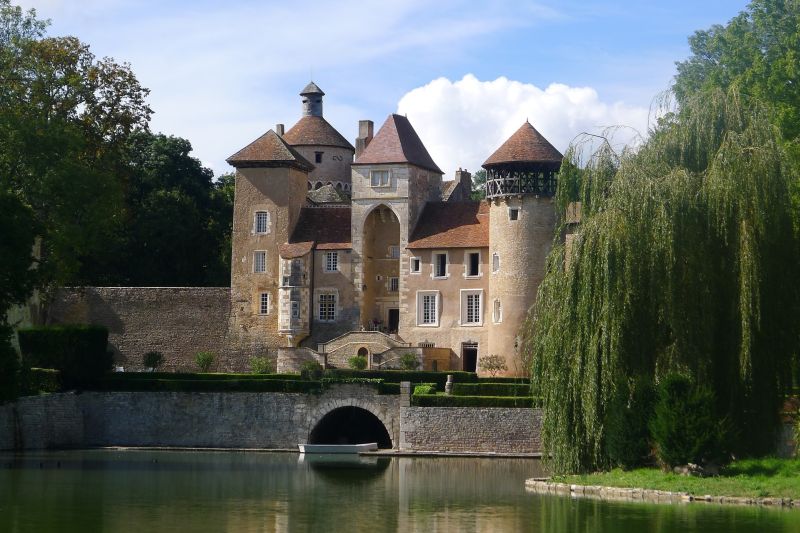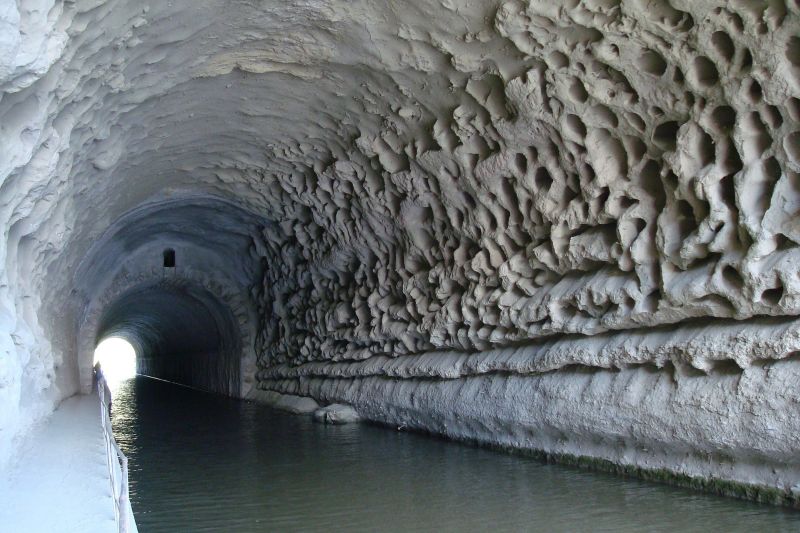The Canal de Bourgogne wends a blissful route through the heart of France. Although the bucolic Burgundian countryside through which it passes provides plenty to hold your attention on a barge cruise, the feats of engineering achieved to construct the canal are just as fascinating to those who know its long history.
Despite the canal being conceived in the early 1600s, it took some 200 years to complete the waterway. Disagreements over designs (which were deemed too expensive), the French Revolution, Napoleonic Wars and restrictions of funding all delayed its construction; it was finally navigable in 1832. At last the north of France was connected to the south, and the River Seine to the River Rhône.
The Pouilly Tunnel
The last piece of the puzzle to be completed was the tunnel that stretches through the hillside for two miles from Pouilly-en-Auxois to Escommes. This impressive feat of engineering is even more staggering when you consider that 90% of it was excavated by hand when it was built, endangering the lives of the workers – who, according to one story, were English prisoners of the Napoleonic Wars. There are 32 ventilation wells that tunnel through the hillside above, the deepest of which is 50 metres.
When the Pouilly tunnel first opened, it could take up to 10 hours to painstakingly pull a barge through the tunnel using a chain attached to the wall. This was replaced by a steam tug in 1867, and then by an electric tug in 1893, which hugely cut the journey time. As it is the terminus for our Southern Burgundy cruise, many guests enjoy watching the barges traverse the tunnel, which now takes between two and three hours.
Lock Keepers’ Cottages
Whether you’re cruising Northern Burgundy on La Belle Epoque or Southern Burgundy aboard L’Impressioniste, you will notice that the Canal de Bourgogne still retains 99% of its original lock houses. Amazingly, 80% of these are still occupied by lock keepers. Past guests have been lucky enough to be shown around one of these historic homes and even invited to play a game of boules with its occupant. Maison gardes were also constructed along the canal. These housed the teams of workers who would travel the length of the waterway to carry out repairs.
These buildings serve as a reminder of the human effort that has gone into constructing, maintaining and preserving the canal, enabling barging enthusiasts to enjoy cruising its waters today.
 English
English
 Spanish
Spanish French
French German
German Norwegian
Norwegian Portuguese
Portuguese Swedish
Swedish Italian
Italian Russian
Russian Simplified Chinese
Simplified Chinese Japanese
Japanese


